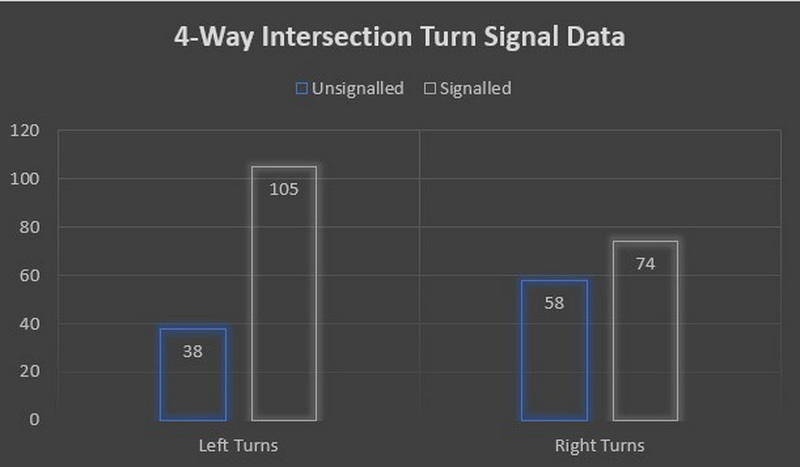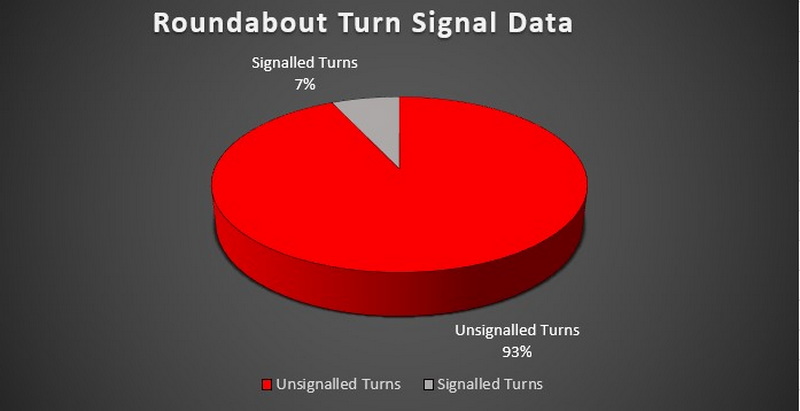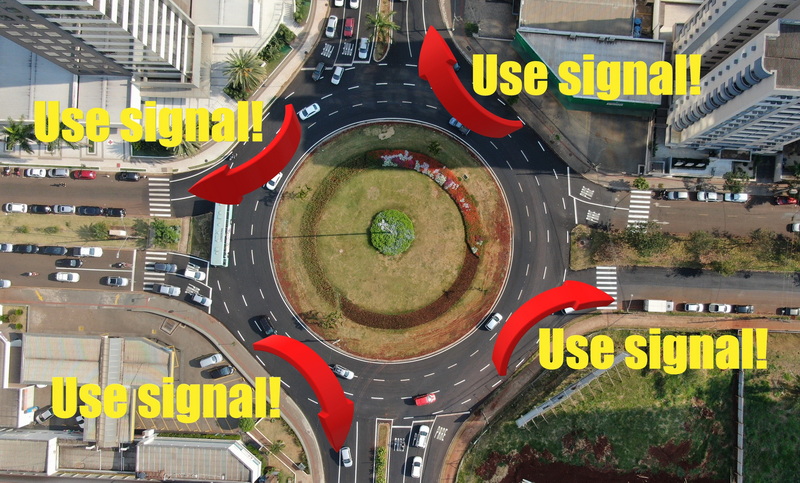What Is a Turn Signal? – Part Deux
By William Urbanski
After my previous article about turn signals, I was ready to drop the whole issue and move on with my life. I said my piece and did not really think there was much more to add to the discourse about the tremendous lack of savoir faire surrounding these devices that, when used as intended, “signal” where a car is going. But lo and behold, the tremendous response to “What Is a Turn Signal” by the general public and, in particular, the extremely well-balanced and learned comments about it by the Gwangju Social Justice Facebook Keyboard Warrior Brigade, showed me without a shadow of a doubt, that there are many people who are just as passionate about this issue as I am. The people of Gwangju have spoken and this past month I felt a renewed sense of purpose in my quest to continue and expand my research into the blatant and egregious misuse of turn signals in our fair city. So, here we go again.
Recap
Cars are basically large, fast-moving metal boxes that people of all shapes and sizes like to whiz around in because it makes them feel important. Furthermore, driving one the way a five-year-old would operate an overpowered go-kart is, admittedly, quite a bit of fun. The problem with cars (well, besides the environmental, social, and financial problems they cause) is that two-ton steel boxes whipping around densely populated urban areas, often mere centimeters from pedestrians, is just a little, teensy bit dangerous. As anyone who has been in a car accident can attest to, it turns out that automobile collisions at any speed are not a whole lot of fun, especially if you happen to be on foot when a car runs into you.
About a hundred years ago, someone figured out that if a car can somehow “signal” where it is going, this dramatically reduces the incidence of collisions because other drivers and pedestrians will actually be able to determine its approximate trajectory. This was the reason turn signals were invented and today, unbeknownst to many, all cars are equipped with them. For those of you unsure of what a turn signal is, take a quick look at the front of your car. There is one located about 60 centimeters to either side of the Mercedes-Benz logo on the hood. It looks like a lightbulb, but unlike the lightbulbs in your house, these ones go “blinky, blinky, blinky” when turned on. Turn signals can greatly increase road safety if (and this is a big “if”) the driver has the resolve and mental fortitude required to turn them on when required.
The amount of effort required to operate a turn signal is exactly equal to the amount of strength and muscular dexterity required to lift a finger. Therefore, anyone with the physical capacity to open a car door and sit down in the driver’s seat can, by default, operate a turn signal lever (also called just a “turn signal” for short).

What Is an Intersection?
In a perfect world, people would be able to drive in relatively straight lines all the time, but such a paradise on earth does not exist. Almost all roads (especially in a city) connect to other roads, and a common place where they cross or “intersect” is known as an intersection. Intersections represent a tremendous cognitive leap in city planning but also pose a wee bit of a safety hazard because, it turns out, they are a great place to smash into other cars at high speeds. In an effort to minimalize the number of high-velocity collisions at these “intersections” civil engineers as well as policy makers have come up with safety schemes that drivers, in theory, are supposed to be at least cursorily familiar with.
One rule that stands above all others, a rule that is so basic and self-evident to not require explanation, is that when approaching an intersection, the driver must obey the traffic signal. While the intricacies of how to obey a traffic signal go far, far beyond the scope of this article, for now, just remember that “red” means stop. Almost as critical as the need to stop at a “red light” is the need for a driver to activate their vehicle’s turn signal before making a right or left turn at an intersection. Now, between the two of these (stopping at a “red light” or using the turn signal), I would say that stopping at a “red light” is the more important thing to remember, but overall, they are both kind of helpful in preventing catastrophic injury. A driver should really strive to obey the traffic signal and use the turn signal.
Traffic Surveys
I took a chunk out of one of my Saturdays to sit at the intersection of 중앙로 and 제봉로 near downtown Gwangju and make a tally of all cars that turned left or right and how many actually used their turn signals. I chose the intersection of 중앙로 and 제봉로 for some very specific reasons. First of all, it is busy but not absolutely bonkers, meaning that drivers would have a good chance to use their turn signals if they really wanted without having to focus on contending with heavy traffic. Second, this is a very straightforward intersection. It has just four ways with no additional turn lanes or anything like that. Last, it has high visibility, meaning it was easy for drivers to see what is happening and easy for me to record the data.
When collecting data, if a car’s signal was obscured, blocked or not fully visible for any reason (like the glare of the sun), I assumed the car did in fact use its signal. The results of this traffic survey show that the number of people who used their turn signal correctly was approximately equal to those who were randomly playing with the shiny buttons on their dashboards.

When turning left, 27 percent (or 38 of 143) of cars did not use their signal. When turning right, a full 44 percent (58 of 132) did not signal at all!
In a second survey conducted at a different type of intersection called a “roundabout,” the results revealed that correct turn signal usage was only slightly above what could be considered a statistical error.
Roundabouts
“Roundabouts” are big, strange circles that connect roads. While they lack those fancy traffic light thingamabobs hanging high in the sky, roundabouts are deceptively simple since drivers can, in essence, only drive around them counterclockwise and always, always exit to the right. Many people may think that roundabouts are a relatively new thing (circular shapes, by the way, are not new things), but they have been in use for decades at least.
The most important thing to understand about a roundabout is that a roundabout is an intersection. While the signaling rules when entering one are pretty complex and easy to misunderstand,1,2 one thing is absolutely certain: When exiting a roundabout, regardless of where you entered, what your direction of travel is, or your inflated sense of self-worth, you must use your right turn signal. For the sake of simplicity (and fairness) in this survey, I only included information on whether people signaled properly when exiting.

A paltry and quite frankly scanty seven percent of motorists activated their turn signals at all. I would like to mention that I counted any sort of turn signal activation that I saw within the roundabout, including a number of hazard signals that were employed as well as a few drivers who, bafflingly, used their left turn signals when exiting.
Searching for Answers
The evidence collected clearly shows that there is an epidemic of turn signal misuse (and nonuse) that exponentially exceeds the scale, scope, and severity of a certain other epidemic that has been making the rounds lately. Mind you, this study only included the signal infractions around intersections and not the myriad other instances (such as changing lanes, merging into traffic, pulling over, etc.) where turn signals are, in theory, supposed to be employed.
When pouring over this remarkable data and using every statistical, graphical, and analytical tool that Microsoft Excel has to offer, I was forced to accept the only plausible explanation as to why motorists fail to activate their turn signals: About half of all drivers in 2022 are either unaware that their cars have turn signals or believe turn signals are activated by the sheer force of magic.
Let’s be real for a second here: Driving is pretty tough. In addition to regulating the speed of the vehicle, a driver has to steer it. Even if a person can manage these two gargantuan tasks (and from what I have seen out there, that is a big “if”), controlling the vehicle is only half the story. A driver also has to pay attention to what other drivers are doing while simultaneously (in principle, anyway) obeying traffic laws. Given how complex a task driving a car is, it is a wonder anyone decides to drive at all!
But if you are among the brave souls who choose to drive or at some point in time are considering driving, please, please, pretty please, at the very least, test out the turn signal in your car. It can be activated by pushing the lever located behind the steering wheel either up or down. It is difficult at first, but if you really focus, you can do it!
That is all for now, and I hope to finally be able to lay this particular issue to rest. See you in the next installment of the “What Is…?” series when I attempt to answer one of the most daunting and perplexing questions human society has ever faced: “What Is a Parking Spot?”
References
Kim, Sk. (2022, January 5). 회전교차로 통행방법(Roundabout) 에 대해 그림으로 쉽게 설명 [Video]. YouTube. https://www.youtube.com/watch?v=wKM3gwApCrw
Roundabouts. (n.d.). Region of Waterloo. https://www.regionofwaterloo.ca/en/living-here/roundabouts.aspx#How-to-videos
The Author
William Urbanski is the managing editor of the Gwangju News and a turn signal aficionado. Instagram: @will_il_gatto.




